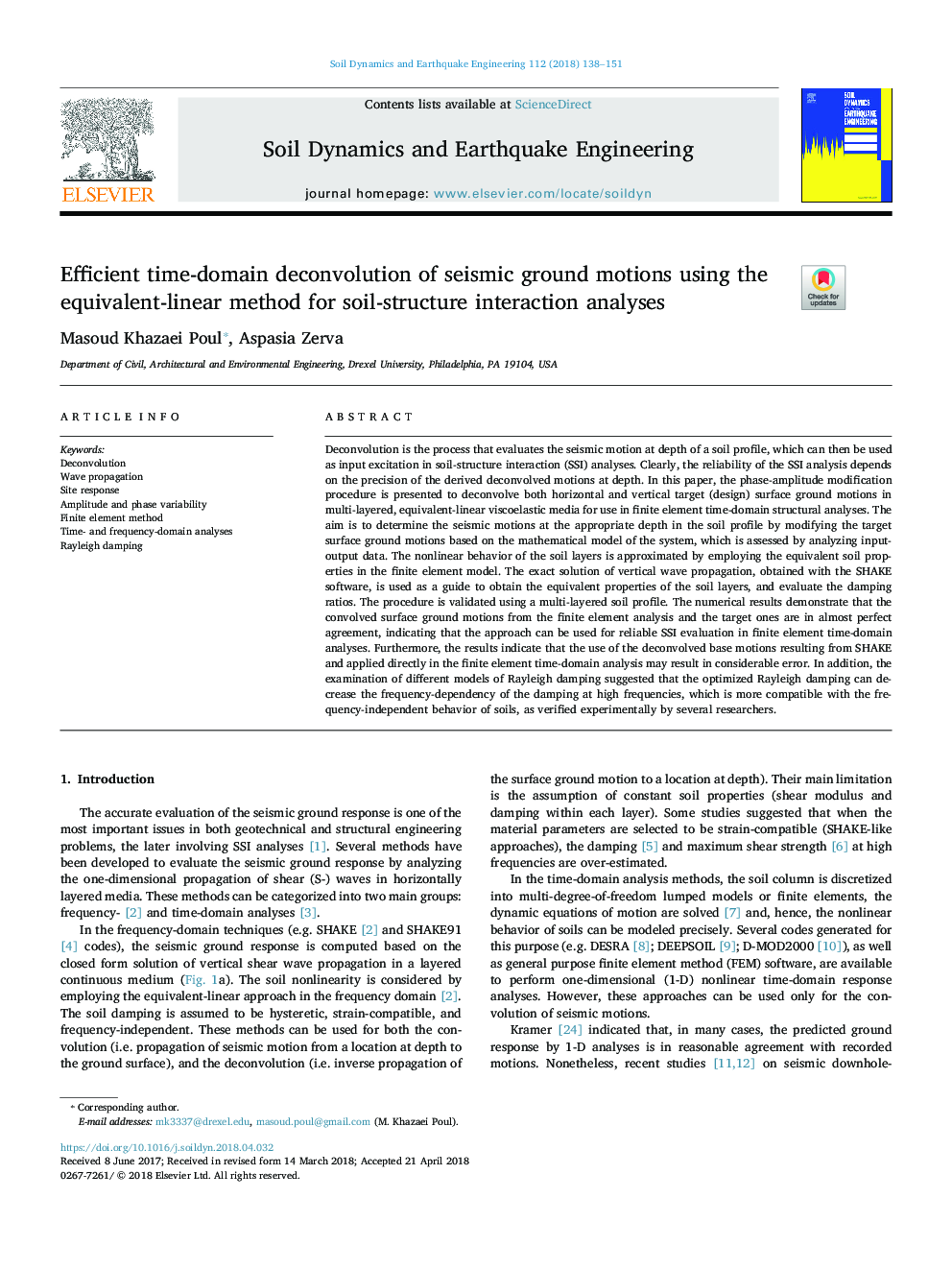| کد مقاله | کد نشریه | سال انتشار | مقاله انگلیسی | نسخه تمام متن |
|---|---|---|---|---|
| 6769884 | 1431681 | 2018 | 14 صفحه PDF | دانلود رایگان |
عنوان انگلیسی مقاله ISI
Efficient time-domain deconvolution of seismic ground motions using the equivalent-linear method for soil-structure interaction analyses
ترجمه فارسی عنوان
تجزیه و تحلیل زمان-دامنه کارآمد از حرکات زمین لرزه ای با استفاده از روش خطی معادل برای تجزیه و تحلیل متقابل خاک
دانلود مقاله + سفارش ترجمه
دانلود مقاله ISI انگلیسی
رایگان برای ایرانیان
کلمات کلیدی
موضوعات مرتبط
مهندسی و علوم پایه
علوم زمین و سیارات
مهندسی ژئوتکنیک و زمین شناسی مهندسی
چکیده انگلیسی
Deconvolution is the process that evaluates the seismic motion at depth of a soil profile, which can then be used as input excitation in soil-structure interaction (SSI) analyses. Clearly, the reliability of the SSI analysis depends on the precision of the derived deconvolved motions at depth. In this paper, the phase-amplitude modification procedure is presented to deconvolve both horizontal and vertical target (design) surface ground motions in multi-layered, equivalent-linear viscoelastic media for use in finite element time-domain structural analyses. The aim is to determine the seismic motions at the appropriate depth in the soil profile by modifying the target surface ground motions based on the mathematical model of the system, which is assessed by analyzing input-output data. The nonlinear behavior of the soil layers is approximated by employing the equivalent soil properties in the finite element model. The exact solution of vertical wave propagation, obtained with the SHAKE software, is used as a guide to obtain the equivalent properties of the soil layers, and evaluate the damping ratios. The procedure is validated using a multi-layered soil profile. The numerical results demonstrate that the convolved surface ground motions from the finite element analysis and the target ones are in almost perfect agreement, indicating that the approach can be used for reliable SSI evaluation in finite element time-domain analyses. Furthermore, the results indicate that the use of the deconvolved base motions resulting from SHAKE and applied directly in the finite element time-domain analysis may result in considerable error. In addition, the examination of different models of Rayleigh damping suggested that the optimized Rayleigh damping can decrease the frequency-dependency of the damping at high frequencies, which is more compatible with the frequency-independent behavior of soils, as verified experimentally by several researchers.
ناشر
Database: Elsevier - ScienceDirect (ساینس دایرکت)
Journal: Soil Dynamics and Earthquake Engineering - Volume 112, September 2018, Pages 138-151
Journal: Soil Dynamics and Earthquake Engineering - Volume 112, September 2018, Pages 138-151
نویسندگان
Masoud Khazaei Poul, Aspasia Zerva,
